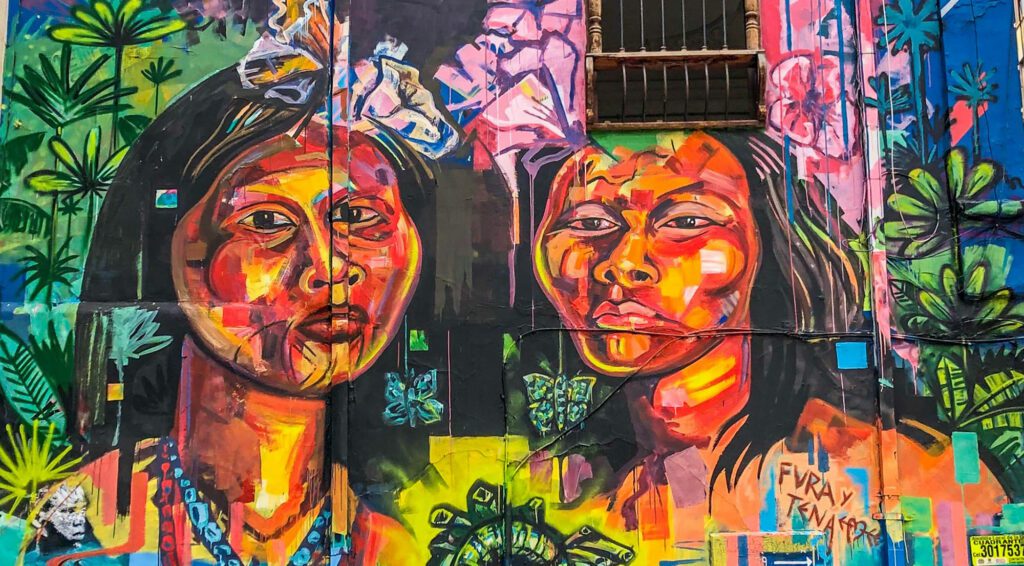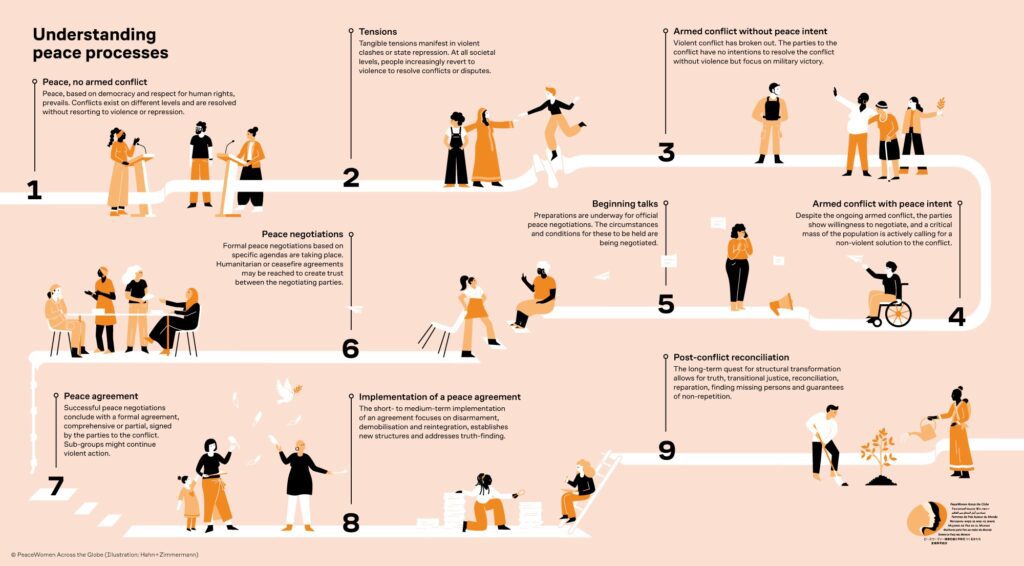
What images do the words “peace process” conjure up for you? Do you picture a large room? Men negotiating for year after year? All culminating in the ceremonious signing of an agreement by the conflicting parties and a photo of the handshake that is then transmitted around the world? From bombarded cities to a peaceful society via a handshake and a few dozen sides of paper: Is it all an illusion? Only in rare cases does an end to war mean peace. So why is the process still depicted in this way?
Since 2000, UN Resolution 1325 has called for greater participation of women in peace processes. Indeed, various studies1 have shown that the influence of women has a positive impact on these processes. The fact is that women work to secure sustainable peace on a daily basis. Making this peacebuilding more visible requires us to broaden and better communicate our understanding of peace processes.
PeaceWomen Across the Globe (PWAG) has challenged and deconstructed the popular perception, bringing the influence of women to the fore. The result of this work is a graphical tool (shown below) that, on the one hand, represents the various phases of a possible peace process and, on the other, focuses on the range of women’s roles and their influence in advancing the peace process or preventing it from moving backwards. This tool is not designed to be a theoretical model that can be applied universally, but a source of questions and input for analytical discussions and a prompt to help complement the established narrative with feminist perspectives.

The graphical representation aims to show the complexity of peace processes. For instance, the graphic can be used to better communicate the relevance of reconciliation and dealing with the past in the context of preventing future conflicts, or the significance of establishing peace initiatives during armed conflict.
In this way, each stage of the process illustrated allows peace work to be linked to feminist perspectives of peace. An example: The call from our partners in Ukraine to invest in social transformation, health, education and financial independence as part of peace efforts.
In order to incorporate the peace work of women in a credible way, there needs to be more feminist narratives finding their way into the conversation. This requires civil society, media representatives and government institutions to commit to diversifying the ways in which they communicate about peace processes. In this way, that image of the handshake between two men can be replaced with one depicting the daily conflict prevention and transformation work carried out specifically by women.
[1] For example: Thania Paffenholz, Nick Ross, Steven Dixon, Anna-Lena Schluchter and Jacqui True, “Making Women Count – Not Just Counting Women: Assessing Women’s Inclusion and Influence on Peace Negotiations,” Geneva: Inclusive Peace and Transition Initiative (The Graduate Institute of International and Development Studies), UN Women, April 2016.